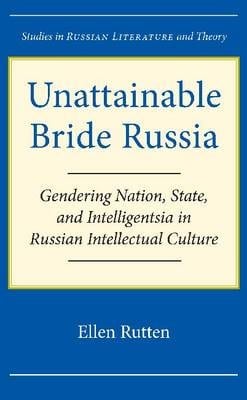![ellen_rutten[1]](https://aseees.org/wp-content/uploads/2015/11/ellen_rutten1.jpg)
Ellen Rutten
Professor of Slavonic Literatures and Cultures, University of Amsterdam
When did you first develop an interest in Slavic, East European and Eurasian Studies?
Youth for Understanding – an educational exchange organization – more or less developed that interest for me. When I was 17, I wanted to use its exchange program to move to a ‘weird country’ for a year. Japan, my first choice, was a complex option for logistic reasons. Our school’s international-affairs counsellor then asked me if I cared to visit Novorossiisk, in southern Russia, instead. I remember using my parents’ computer to collect the scarce details that the name ‘Novorossiisk’ then – this was pre-Google! – engendered online. I read about the Black Sea, the Caucasus, the mild climate, and decided that this substitute for Japan would do. In Novorossiisk, after half a year or so, I began to read Russian prose in the original language – Turgenev’s Fathers & Sons and his “First Love,” Chekhov’s Cherry Orchard. That was the moment that I started developing a more than passing interest in Russia.
How have your interests changed since then?
Together with many others, I have gradually shifted from a literature-only towards a broader, cultural studies-inspired perspective on Russia in my research. I started my student career with a paper on that same “First Love” story that I read in Novorossiisk – but with time, my objects of interest began to include different things: songs, tattoos, cartoons, and, most importantly, social media comments. My interests still change today: in my most recent research, I am moving back from the strictly socio-political angle that temporarily dominated my work towards aesthetic domains.
What is your current research/work project?
This year, I started a research project called “Sublime Imperfections: Creative Interventions in Post-1989 Europe.” In this 5-year project, two PhD students, an assistant and I explore the persuasive current interest in the non-perfected among creative professionals (think torn jeans, blurry photos, scrapwood furniture). We study the tradition to frame imperfection as hallmark for the authentic and the sublime – and argue that this tradition heightens in times of radical socio-political transition. The PhDs examine Dutch anti-design and ‘Ostalgic’ Russian trash aesthetics; I contextualize these local, contemporary practices in a transnational, cultural-historical analysis.
What do you value about your ASEEES membership?
The conferences have, in my career, really made a difference, both socially and intellectually. Some of my long-lasting professional friendships started there; book plans took new turns after my ASEEES talks; but I also appreciate the meetings’ sheer size. Their massiveness is easy to chide, but it creates splendid opportunities for anonymous ‘scholarly shopping.’ I remember visiting wonderful panels about Russian military history, for instance, or Golden Ring tourism. The possibility to take these, for me, atypical conference lanes are a key reason that I try to visit each convention.
Besides your professional work, what other interests and/or hobbies do you enjoy?
Spending time with my husband Thomas and daughter Ulvi, reading, walking, cooking, and eating and drinking interesting things. Rooftop gardening as well: this summer, to give our roof a stronger dacha twist, I personally drudged up four floors with young birch trees, rosebushes, ivy, wild strawberries, and hundreds of kilos of black earth.
